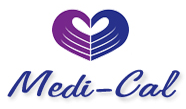Medi-Cal
Medi-Cal provides quality, comprehensive coverage to nearly 14 million California children, parents, seniors, and people with disabilities and thanks to the Affordable Care Act, low-income childless adults.
Through Medi-Cal, low-income Californians receive preventive care, doctor visits, hospitals stays, medications, and other vital medical services. For every dollar California spends on Medi-Cal, it receives a dollar or more from the federal government, more than doubling the investment of each state dollar into this eminently cost-effective program.
 Consumer advocates work closely with state departments and elected leaders to ensure quality oversight of the health plans that operate in Medi-Cal. Changes in the program require much stakeholder coordination, including for major efforts such as the work to integrate other social services programs into Medi-Cal through CalAIM.
Consumer advocates work closely with state departments and elected leaders to ensure quality oversight of the health plans that operate in Medi-Cal. Changes in the program require much stakeholder coordination, including for major efforts such as the work to integrate other social services programs into Medi-Cal through CalAIM.
California has led the way in expanding Medi-Cal to include more Californians regardless of immigration status. Starting in January 2024, all income-eligible Californians will be able to access the comprehensive health care program, eliminating barriers to care.